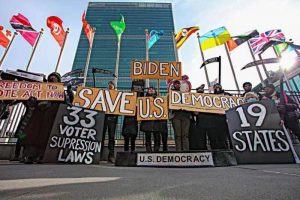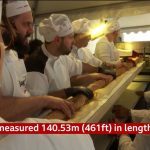“Statistics South Africa’s (StatsSA) figures are not just abstract figures; it is the pulsating lifeblood of a crisis that has been overlooked for too long.”
This is what the DA says after StatsSA announced on Wednesday that the inflation rate last month stood at 6.3% – the lowest inflation rate in 13 months, RNews reported earlier today.
However, this also means that the inflation rate has exceeded the Reserve Bank’s target range for an uninterrupted 13 months, says a concerned dr. Dion George, the DA’s spokesperson on finances.
George says an in-depth analysis of today’s figures paints a dark picture.
The 12% rise in food prices is particularly worrying. The price of bread – an essential staple food – has also risen by 17.8% within a year.
“Today’s figures highlight the disturbing truth – the poorest households have experienced an astonishing 9.9% increase in their living costs over the past 12 months.”
The poorest 10% of South Africans now spend half of their annual budget on food and this makes them particularly susceptible to food price increases.
“In sharp contrast, the inflation rate for the richest households – which incidentally includes ANC government cabinet ministers and officials – was only 5.9%.”
George says the ministers are far removed from the harsh reality of widespread hunger and poverty.
Prof. Raymond Parsons, economist from the North-West University’s business school, says again that it is welcome but not unexpected good news that the consumer price index (CPI) fell in May.
The month-on-month change in the consumer price index (CPI) stood at a mere 0.2% last month.
Parsons says it would appear that South Africa is moving closer to its goal of price stability.
“However, core inflation remains stubborn for the time being.”
Forecasts for economic growth in 2023 meanwhile move from 0.1% to just 0.3%. Parsons says the current cross currents in the economy suggest that the Reserve Bank should follow the US Federal Reserve’s example and hold off on further interest rate hikes at its July meeting for the time being.
“There are lags between monetary policy decisions and their effects on the real economy that need to be considered. It is now necessary for the Reserve Bank to also determine what the cumulative effect of its interest rate increases since November 2021 has been on the economy.”








